How to properly prune garden roses for the winter
The visual appeal of the queen of flowers, roses depends on the proper care of her. One of the methods of caring for rose bushes is pruning, which is carried out according to certain rules that are individual for each type of garden flower.
the beauty roses makes the gardener not only admire her, but constantly rejuvenate, strengthen the bushes of the plant by properly cutting them for the winter. It is in the fall that they devote more time to caring for roses, trying to prepare them for a difficult period of life. And then the spring awakening of the plant will be joyful, it will be ready for further development, flowering.
Content:
- Species variety of roses: the best varieties
- Basic types of garden flower pruning
- Pruning roses according to the rules and on time
- The benefits of pruning rose bushes
Species variety of roses: the best varieties
Breeders are constantly working on breeding different types of roses:
- Polyanthus, or multi-flowered plants appeared in the 19th century as a result of crossing. With a growth of just over fifty centimeters, they have short stems, decorated with small buds collected in lush inflorescences. The main varieties of this species include Holstein with flowers of a dark crimson tone, Dagmar Shpet, pleasing with double inflorescences of white-pink color, Orange Triumph - with buds of orange tint.
- There are many varieties of roses of the hybrid type Floribunda, and they all differ in beauty, grace, and a pleasant smell. Delicate white Carte blanche beckons with the aroma of terry flowers. Red Lilly Marlene, yellow Galaxy, dark crimson Nicolo Paganini survey the surroundings of the garden from a height of one meter.
- Climbing roses differ or erect, or flexibility, soft shoots. Their height reaches from two to three meters. The color of large flowers is amazing, there are buds from pale pink (Noack), bright pink (Laguna, Maritim), to yellow shades (Golden Gate) and dark red (Belcanto, Amadeus).
- Park, English species are considered the most vigorous with large flowers, aroma beating in the nose. They are represented by the John Davis variety with interestingly shaped flowers of a pale pink hue, decorated with golden stamens. Alexander Mackenzie is characterized by large double inflorescences of a red tone.
- Hybrid tea roses are characterized by a huge variety of varieties with a wide range of colors and beautiful bud shapes. They are good for both cutting and garden decoration. The Alexander variety reaches a height of one and a half meters, its red flowers are visible from afar. Rose bushes Hamburg are covered with faintly scented crimson flowers. And the pure white Pax has large buds on straight shoots two meters long.
For each type of roses, pruning is required, which is carried out in different ways, taking into account the characteristics of the variety.
Basic types of garden flower pruning
Autumn procedure trimming - the matter is painstaking and is carried out taking into account the size of the bush, the intensity of its growth:
- To cut roses according to the short type, it is necessary to those that grow and bush strongly. These include polyanthus plant species. After the procedure, only the base of the bush should remain, on which there are two or three dormant buds.
- To get rid of the rose from weak, sick, undeveloped shoots, which activates the appearance of new branches, pruning is carried out in the middle type. The plant leaves stems up to thirty centimeters high from the base - with four to five buds. This method is suitable for hybrid tea varieties.
- Sparing long pruning is recommended for English, park species, when shoots with ten buds are left. If you cut off other species sparingly, they bloom early. But it is often not recommended to carry it out, because the bushes will lose their shape, and the shoots will stretch out a lot.
- Floribunda roses are pruned in combination: some branches are weak, others, diseased, non-flowering - strongly.
- All low-growing varieties undergo a long pruning in the first year, and then shortly remove old, dried branches.
Pruning rose bushes is necessary to maintain their high vitality.
Pruning roses according to the rules and on time
Cutting rose bushes is carried out on a quiet, sunny day in mid-late October, preferably on the waning moon according to certain rules:
- First of all, they prepare a pruner or a garden saw, which will be pruned. The tool must be sharpened, treated with a disinfectant solution.
- On each bush, strong, healthy stems of no more than five are determined. Such a shoot can be identified by the color of the stem, it must be dark green, and branches must come from it. The rest of the branches are deleted completely.
- Before clipping, three to eight buds are left on the branch from the bottom, depending on the type of pruning. A centimeter is drawn upwards from the outer upper kidney and cut off by tilting the secateurs inward. With a dark color of the cut site, it is necessary to cut off another part of the shoot until a white pulp appears inside the trunk.
- The appearance on the branches of gall outgrowths, covered with thick long hairs, is a signal of infection of the bush with walnut-makers, insects that can destroy roses. These nuts are harvested first.
- After the session, all the places of the cuts are coated with garden varnish or a special solution.
- Cut branches must be removed with subsequent burning.
Climbing roses are not pruned, they are laid on the ground, spreading coniferous spruce branches. Although in some cases it is recommended to shorten the branches of this type of plant after the first planting, leaving no more than thirty centimeters from the base of the bush.
At the end of the growing season, last year's shoots should also be removed completely, and the young should be placed horizontally, which will increase the flowering of the rose.
When pruning, you need to clearly know what the procedure is for: for the purpose of early, abundant flowering, forming a bush or lengthening the life of a flowering plant.
The benefits of pruning rose bushes
Using different types of pruning, gardeners achieve different goals in the process of growing rose bushes:
- Short pruning allows you to rejuvenate old plants, increase the vitality of weakened garden flowers. This is due to the fact that the root system is strengthened. But often it is not recommended to carry out radical pruning of bushes - the plant will begin to weaken.
- Moderate haircut stimulates early flowering roseswhich will be covered with abundantly bright flowers in the summer.
- Bushes will bloom continuously, which are pruned in different ways, which contributes to the successful formation of the rose.
- Removing dry, old shoots from a flowering plant will help create such conditions for it that will ensure the penetration of sunlight into it, air access to the leaves.
- By removing unflowering young shoots in the fall, the gardener ensures the prevention of flower diseases: rust, powdery mildew, black spot. After all, the young branches have not grown stronger, they can not stand the winter and get sick, infecting all the shoots.
If the roses are not cut, then all their strength will go to nourish the stems, which leads to a weakening of the root system.Therefore, young rose bushes will feel better if the upper part of the shoots is trimmed. Then the plant will meet the spring strong, viable.
Removing branches along with faded buds and leaves, a person will not let the healthy parts of the garden beauty rot.
Pruning rose bushes is carried out in spring and autumn, but the pre-winter procedure is most beneficial for a flowering plant.
More information can be found in the video:





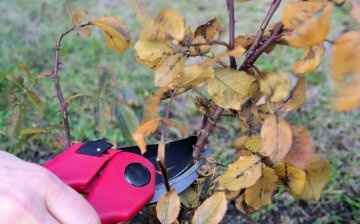

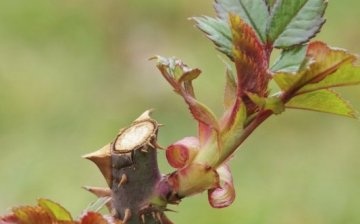






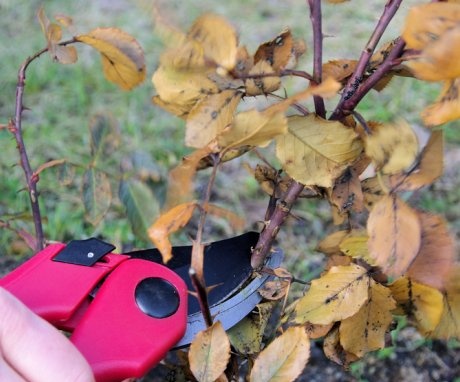
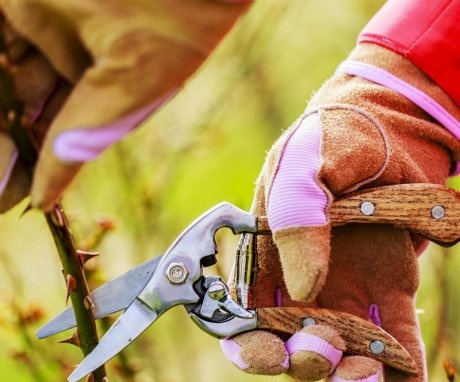
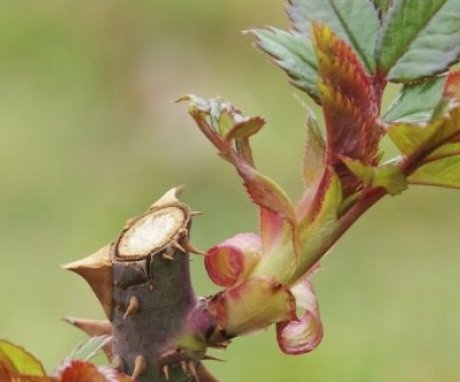
In our region, a rose usually blooms three times per season. I cut the blooming and faded flowers and the next year the rose still blooms well. I do not do any other cutting of shoots.